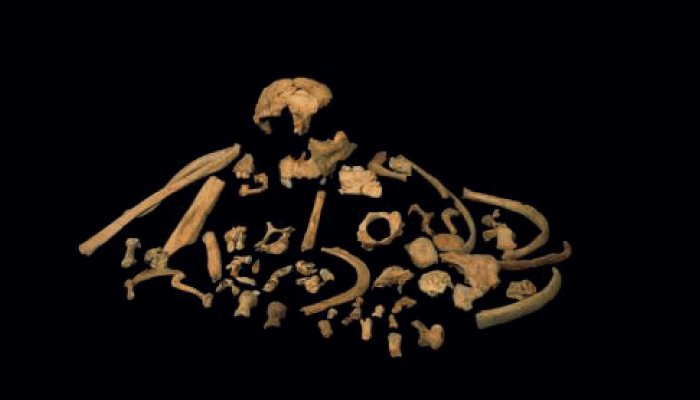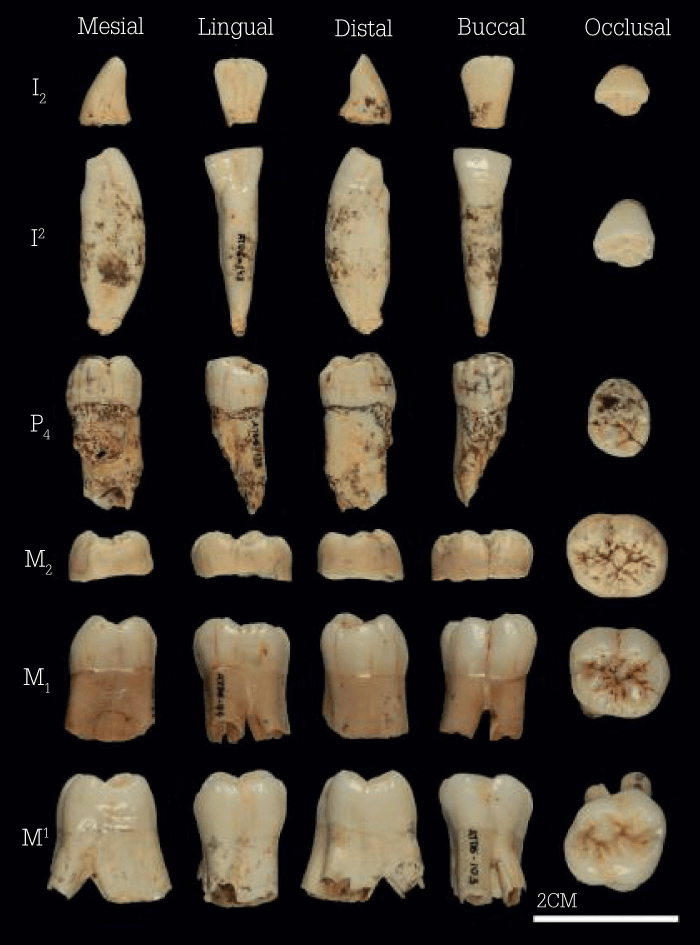Researchers at the University of Copenhagen, in collaboration with colleagues from the National Research Center on Human Evolution in Burgos, Spain, have retrieved human genetic information from an 800,000-year-old fossil for the first time. The fossilized tooth, belonging to the hominin species Homo antecessor, sheds light on a key branching point in our species’ family tree (1).
The evolutionary relationship between Homo sapiens, Neanderthals and Denisovans has long been debated in paleoanthropology. Most recently, H. antecessor has been pegged as our last common ancestor – though there has been much debate regarding the validity of these claims, which are largely based on analyzing skeletal morphology.
Due to its degradation over time, the oldest human DNA analyzed is dated at no more than approximately 400,000 years – but ancient protein analysis could enable researchers to trace our evolutionary history much further back. “Paleoproteomics is based on the analysis of ancient protein sequences preserved within archeological or paleontological tissues using MS,” says Frido Welker, lead author of the paper. “As proteins survive longer than DNA, paleoproteomics can delve much deeper into human evolution.”

Because our cells build proteins based on instructions found in our DNA, the order of amino acids in these protein sequences can tell us about the individual’s genetic code. “By comparing the order of amino acids within these protein sequences with those from other hominins, we can gather evolutionary information to determine how they are genetically related,” adds Welker.
The team analyzed several proteins from the ancient tooth enamel, including a protein sequence derived from a gene specific to the Y chromosome – telling us the fossil was from a male. “Our findings indicate that H. antecessor is closely related to the last common ancestor of Homo sapiens, Neanderthals, and Denisovans,” says Welker. Although it is too early to confidently put H. antecessor as our last common ancestor, it is certainly a strong contender. Paleoproteomics offers researchers a whole new avenue to explore our genetic past – and close in on our true ancestor. “In the future, we want to analyze other hominin and animal fossils, to further our understanding of human evolution and the environments in which early hominins evolved.”

References
- F Welker et al., Nature, 580, 235–238 (2020). DOI: 10.1038/s41586-020-2153-8




